Distributed Geoscience Algorithm Integration Based on OWS Specifications: A Case Study of the Extraction of a River Network
Abstract
1. Introduction
2. Literature Review
3. Methods
3.1. The Architecture of Geoscience Algorithm Integration
3.2. Geoscience Service Management Mechanism
3.3. XML Description of the Algorithm Integration
- Filling pits: This step is used for data preprocessing. In the case of data errors, the original DEM data will have noise and there will be pits. In the D8 flow direction algorithm, a part of the river network is broken down, which contradicts the rules of river formation. The small defects in the data are removed by filling the pits in the DEM data, as shown in Figure 3.
- Calculating flow direction: After filling, the value of each center pixel is not smaller than the values of the eight pixels around it; thus, each water pixel will flow toward the pixels with lower values. This process is utilized to form the 8 flow directions. The grid flow is calculated by using the D8 algorithm to create the flow from each pixel toward the steepest downhill adjacent points. As shown in Figure 4, the values are 1, 2, 4, 8, 16, 32, 64, and 128 in each direction.
- Calculating flow accumulation: To form a river network by rainwater, each grid is given a water drop. The flow calculation creates a grid for each water droplet accumulated by each pixel.
- Thresholding flow accumulation: The threshold of the number of water droplets is calculated while considering that the number of water droplets in a river network pixel is greater than the threshold value. The binarization algorithm is used to set the values of the pixels in the river network to 1 and the other values to 0.
- Converting the data format: The grid of the river network is converted to vector format to facilitate data editing and analysis.
3.4. Integrated Model Execution Strategy
- Search the system model base and determine whether there is a predefined integrated model; if yes, then skip to step iii; if no, go to step ii.
- Create a model, and submit it after completion. In this step, the user can build the integrated model according to Section 3.3 and then submit it to the model base.
- Select the required model XML description document and submit it to the model execution engine.
- Execute the integrated model. During the execution of the integrated geoscience model, the model integration module will send the XML document to the model execution engine, which finishes execution via the BPEL engine.
- Acquire the result. A URL link is returned after a complete process is executed by the BPEL engine, and the service user can obtain the results of the geoprocessing through the URL link.
4. Experiment
4.1. Experiment Description
- Test 1: No data transmission, and the data and processing methods are in the same cloud node; this scenario tests the proposed geoscience algorithm integration method in the single node and it can be used by the distributed users.
- Test 2: Only partial data (i.e., DEM data) are acquired by distributed transmission, and the other required data and processing methods are on one cloud node. This test scenario tests the execution of the proposed geoscience algorithm integration method between two organizations and can be used by the distributed users.
- Test 3: Full data transmission, and the data and all algorithms are on different cloud nodes. In this test situation, the data and geoscience algorithms are built by distributed users; this scenario tests the proposed geoscience algorithm integration method over a wide area and it can be used by the distributed users.
- Test 4: Building the same workflow via ArcGIS Model Builder and executing it on a single machine. The test is usually configured by the users of one organization or institute and it can only be used on a single machine.
4.2. River Network Extraction Results of Geoscience Algorithm Integration
5. Discussion
6. Conclusions
Author Contributions
Funding
Acknowledgments
Conflicts of Interest
References
- Min, F.; Liu, S.G.; Euliss, N.H.J.; Young, C.; Mushet, D.M. Prototyping an online wetland ecosystem services model using open model sharing standards. Environ. Model. Softw. 2011, 26, 458–468. [Google Scholar]
- Baraghimian, T.; Young, M. GeoSpaces TM—A virtual collaborative software environment for interactive analysis and visualization of geospatial information. In Proceedings of the IEEE International Geoscience and Remote Sensing Symposium, University of New South Wales, Sydney, Australia, 9–13 July 2001; Volume 4, pp. 1678–1680. [Google Scholar]
- Castronova, A.M.; Goodall, J.L.; Ercan, M.B. Integrated modeling within a Hydrologic Information System: An OpenMI based approach. Environ. Model. 2013, 39, 263–273. [Google Scholar] [CrossRef]
- Blanning, R.W. Issues in the design of relational model management systems. In Proceedings of the American Federation of Information Processing Societies: 1983 National Computer Conference, Anaheim, CA, USA, 16–19 May 1983; Volume 52, pp. 395–401. [Google Scholar]
- Yue, S.; Chen, M.; Wen, Y.; Lu, G. Service-oriented model-encapsulation strategy for sharing and integrating heterogeneous geo-analysis models in an open web environment. ISPRS J. Photogramm. Remote Sens. 2016, 114, 258–273. [Google Scholar] [CrossRef]
- Günther, O.; Müller, R. From GISystems to GIServices: Spatial Computing on the Internet Marketplace. In Interoperating Geographic Information Systems; Springer: Boston, MA, USA, 1999; pp. 445–448. [Google Scholar]
- Tsou, M.H. The Future Development of GISystems, GIScience, and GIServices. In Reference Module in Earth Systems and Environmental Sciences; Elsevier: Amsterdam, The Netherlands, 2017. [Google Scholar]
- Wen, Y.; Chen, M.; Yue, S.; Zheng, P.; Peng, G.; Lu, G. A model-service deployment strategy for collaboratively sharing geo-analysis models in an open web environment. Int. J. Digit. Earth 2017, 10, 405–425. [Google Scholar] [CrossRef]
- Wang, L.; Chen, D.; Huang, F. Virtual workflow system for distributed collaborative scientific applications on Grids. Comput. Electr. Eng. 2011, 37, 300–310. [Google Scholar] [CrossRef]
- Chen, Z.; Lin, H.; Chen, M.; Liu, D.; Bao, Y.; Ding, Y. A framework for sharing and integrating remote sensing and GIS models based on web service. Sci. World J. 2014, 2014, 354919. [Google Scholar] [CrossRef] [PubMed]
- Russomanno, D.J.; Kothari, C.R.; Thomas, O.A. Building a Sensor Ontology: A Practical Approach Leveraging ISO and OGC Models. In Proceedings of the ISO and OGC Models, the 2005 International Conference on Artificial Intelligence, Las Vegas, NV, USA, 2005; pp. 637–643. [Google Scholar]
- Feng, M.; Zhu, Y. Model Sharing based on Distributed GIS: A Case Study of Tapes-G Model. In Proceedings of the IEEE International Symposium on Geoscience and Remote Sensing, Beijing, China, 10–15 July 2006; pp. 2899–2902. [Google Scholar]
- Granell, C.; Díaz, L.; Gould, M. Service-oriented applications for environmental models: Reusable geospatial services. Environ. Model. Softw. 2010, 25, 182–198. [Google Scholar] [CrossRef]
- Carlos, G.; Laura, D.; Alain, T.; Joaquín, H. Assessment of OGC web processing services for rest principles. Int. J. Data Min. Model. Manag. 2012, 6, 391–412. [Google Scholar]
- Goodall, J.L.; Castronova, A.M.; Huynh, N.; Caicedo, J.M. Application of the Open Geospatial Consortium (OGC) Web Processing Service (WPS) Standard for Exposing Water Models as Web Services. In Proceedings of the AGU Fall Meeting, San Francisco, CA, USA, 3–7 December 2012. AGU Fall Meeting. [Google Scholar]
- Castronova, A.M.; Goodall, J.L.; Elag, M.M. Models as web services using the Open Geospatial Consortium (OGC) Web Processing Service (WPS) standard. Environ. Model. Softw. 2013, 41, 72–83. [Google Scholar] [CrossRef]
- Welton, B.; Chouinard, K.; Sultan, M.; Becker, D.; Milewski, A.; Becker, R. Creation of a Web-Based GIS Server and Custom Geoprocessing Tools for Enhanced Hydrologic Applications. In Proceedings of the AGU Fall Meeting, San Francisco, CA, USA, 13–17 December 2010. AGU Fall Meeting Abstracts. [Google Scholar]
- Meng, X.; Xie, Y.; Bian, F. Distributed Geospatial Analysis through Web Processing Service: A Case Study of Earthquake Disaster Assessment. J. Softw. 2010, 5, 671–679. [Google Scholar] [CrossRef]
- Tan, X.; Di, L.; Deng, M.; Fu, J.; Shao, G.; Gao, M.; Sun, Z. Building an Elastic Parallel OGC Web Processing Service on a Cloud-Based Cluster&58; A Case Study of Remote Sensing Data Processing Service. Sustainability 2015, 7, 14245–14258. [Google Scholar]
- Tan, X.; Di, L.; Deng, M.; Chen, A.; Huang, F.; Peng, C.; Gao, M.; Yao, Y. Cloud- and Agent-Based Geospatial Service Chain: A Case Study of Submerged Crops Analysis During Flooding of the Yangtze River Basin. IEEE J. Sel. Top. Appl. Earth Obs. Remote Sens. 2015, 8, 1359–1370. [Google Scholar] [CrossRef]
- Sun, Z.; Di, L.; Fang, H.; Zhang, C.; Yu, E.; Lin, L.; Tan, X.; Yue, P. Embedding Pub/Sub mechanism into OGC web services to augment agricultural crop monitoring. In Proceedings of the IEEE Fifth International Conference on Agro-Geoinformatics, Tianjin, China, 18–20 July 2016; pp. 1–4. [Google Scholar]
- Milewski, A.; Sultan, M.; Chouinard, K.; Welton, B.; Beacker, R.; Ahmed, M. Multi-scale Hydrogeologic applications using a web-based GIS server and custom geoprocessing tools. In Proceedings of the Geological Society of America, Minneapolis, MN, USA; 2011. [Google Scholar]
- Di, L.; Sun, Z.; Yu, E.; Song, J.; Tong, D.; Huang, H.; Wu, X.; Domenico, B. Coupling of Earth science models and earth observations through OGC interoperability specifications. In Proceedings of the IEEE Geoscience and Remote Sensing Symposium, Beijing, China, 10–15 July 2016; pp. 3602–3605. [Google Scholar]
- Di, L.; Chen, A.; Yang, W.; Zhao, P. The integration of grid technology with OGC web services (OWS) in NWGISS for NASA EOS data. In Proceedings of the NWGISS for NASA EOS Data, in Ggf8 & HPDC, Chicago, IL, USA, 2003; pp. 24–27. [Google Scholar]
- Di, L.; Chen, A.; Yang, W.; Liu, Y.; Wei, Y.; Mehrotra, P.; Hu, C.; Williams, D. The development of a geospatial data Grid by integrating OGC Web services with Globus-based Grid technology. Concurr. Comput. Pract. Exp. 2008, 20, 1617–1635. [Google Scholar] [CrossRef]
- Zhang, C.; Di, L.; Sun, Z.; Yu, E.G.; Hu, L.; Lin, L.; Tang, J.; Shahinoor, R.M. Integrating OGC Web Processing Service with cloud computing environment for Earth Observation data. In Proceedings of the International Conference on Agro-Geoinformatics, Fairfax, VA, USA, 7–10 August 2017; pp. 1–4. [Google Scholar]
- Tan, X.; Di, L.; Deng, M.; Huang, F.; Ye, X.; Sha, Z.; Sun, Z.; Gong, W.; Shao, Y.; Huang, C. Agent-as-a-service-based geospatial service aggregation in the cloud: A case study of flood response. Environ. Model. Softw. 2016, 84, 210–225. [Google Scholar] [CrossRef]
- Nativi, S.; Nativi, S.; Lehmann, A.; Ray, N. Wps mediation: An approach to process geospatial data on different computing backends. Comput. Geosci. 2012, 47, 20–33. [Google Scholar]
- Meek, S.; Jackson, M.; Leibovici, D.G. A bpmn solution for chaining ogc services to quality assure location-based crowdsourced data. Comput. Geosci. 2016, 87, 76–83. [Google Scholar] [CrossRef]
- Nativi, S.; Mazzetti, P.; Geller, G.N. Environmental model access and interoperability: The geo model web initiative. Environ. Model. Softw. 2013, 39, 214–228. [Google Scholar] [CrossRef]
- Mazzetti, P.; Roncella, R.; Mihon, D. Integration of data and computing infrastructures for Earth Science: An image mosaicking use-case. Earth Sci. Inform. 2016, 9, 325–342. [Google Scholar] [CrossRef]
- Wang, L.; Chen, D.; Hu, Y.; Ma, Y.; Wang, J. Towards enabling Cyberinfrastructure as a Service in Clouds. Comput. Electr. Eng. 2013, 39, 3–14. [Google Scholar] [CrossRef]
- Hey, T.; Trefethen, A.E. Cyberinfrastructure for e-Science. Science 2005, 308, 817–821. [Google Scholar] [CrossRef]
- Hofer, B. Geospatial Cyberinfrastructure and Geoprocessing Web—A Review of Commonalities and Differences of E-Science Approaches. ISPRS Int. J. Geo-Inform. 2013, 2, 749–765. [Google Scholar] [CrossRef]
- Lin, H.; Chen, M.; Lu, G.; Zhu, Q.; Gong, J.; You, X.; Wen, Y.; Xu, B.; Hu, M. Virtual Geographic Environments (VGEs): A New Generation of Geographic Analysis Tool. Earth-Sci. Rev. 2013, 126, 74–84. [Google Scholar] [CrossRef]
- Chen, M. Managing and sharing geographic knowledge in virtual geographic environments (VGEs). Ann.GIS 2015, 21, 261–263. [Google Scholar]
- Chen, M.; Lin, H.; Kolditz, O.; Chen, C. Developing dynamic virtual geographic environments (VGEs) for geographic research. Environ. Earth Sci. 2015, 74, 6975–6980. [Google Scholar] [CrossRef]
- Zhang, C.; Chen, M.; Li, R.; Ding, Y.; Lin, H. A virtual geographic environment system for multiscale air quality analysis and decision making: A case study of SO2, concentration simulation. Appl. Geogr. 2015, 63, 326–336. [Google Scholar] [CrossRef]
- GIS in the Cloud. Available online: http://www.esri.com/library/whitepapers/pdfs/gis-in-the-cloud-chappell.pdf (accessed on 17 November 2018).
- Mapping and GeoSpatial Analysis in Amazon Web Services Using ArcGIS. Available online: https://aws.amazon.com/cn/whitepapers/mapping-geospatial-analysis-arcgis/ (accessed on 17 November 2018).

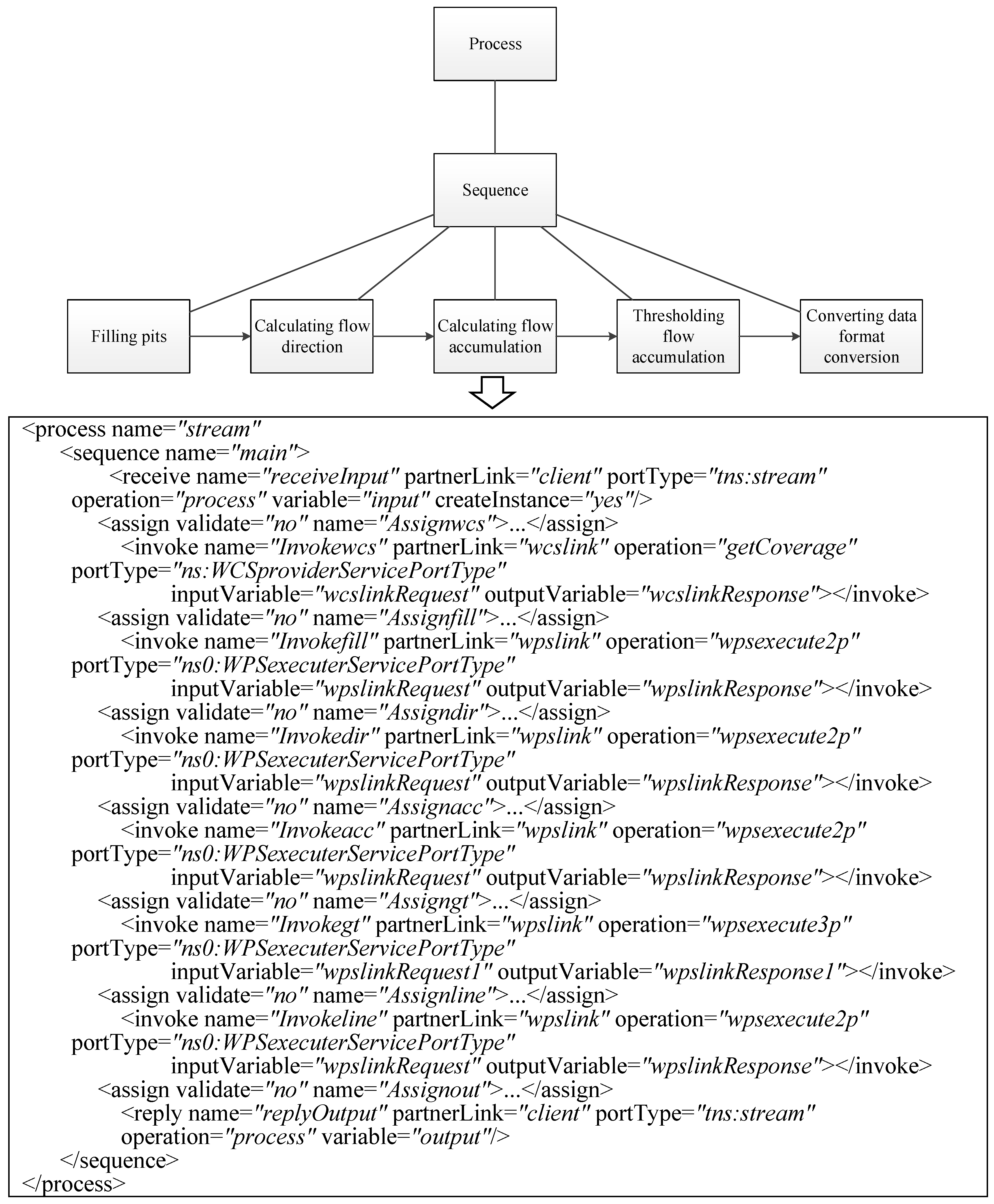

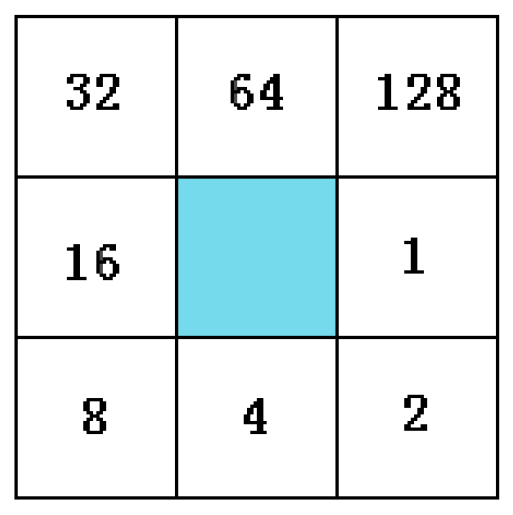
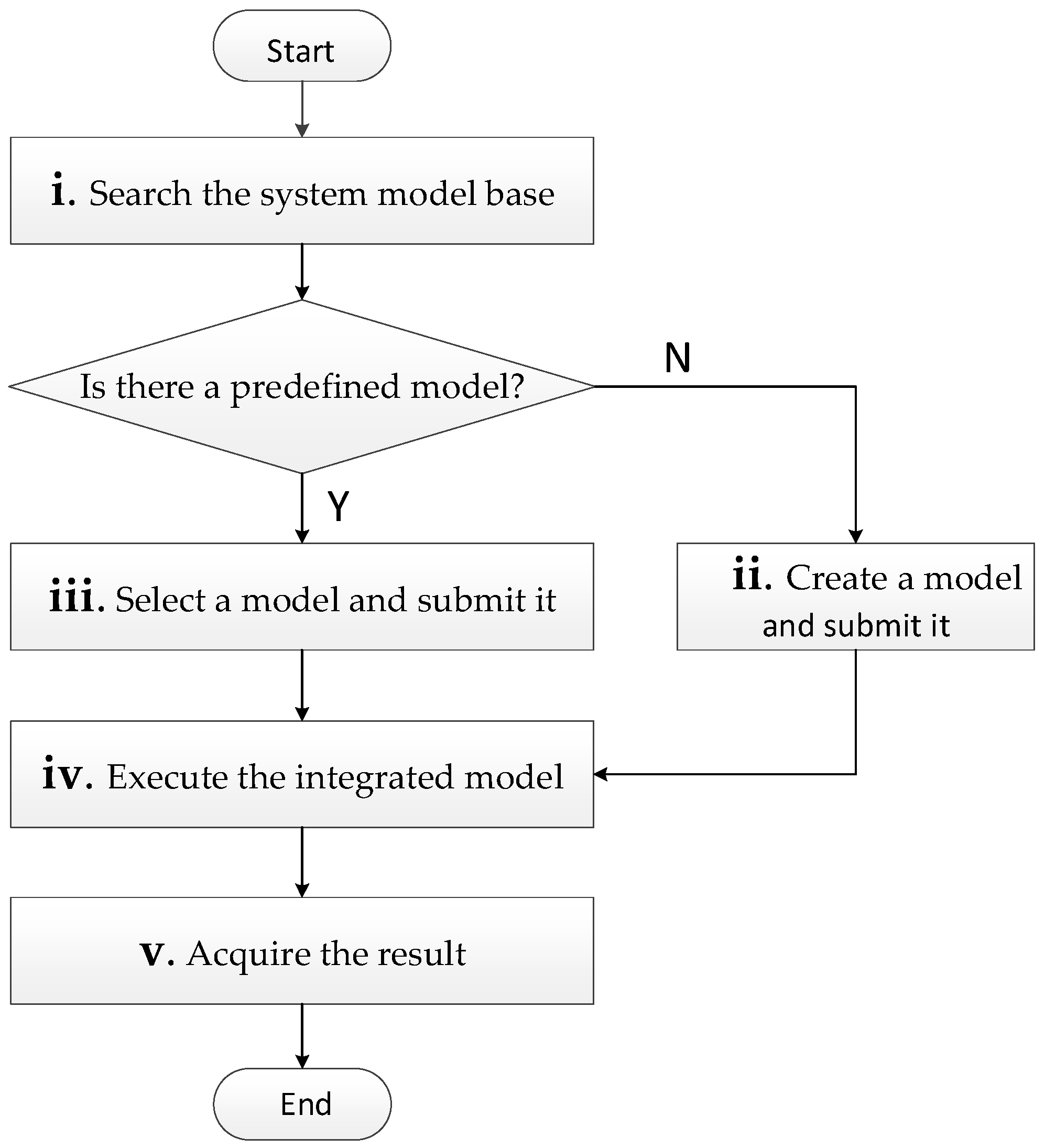
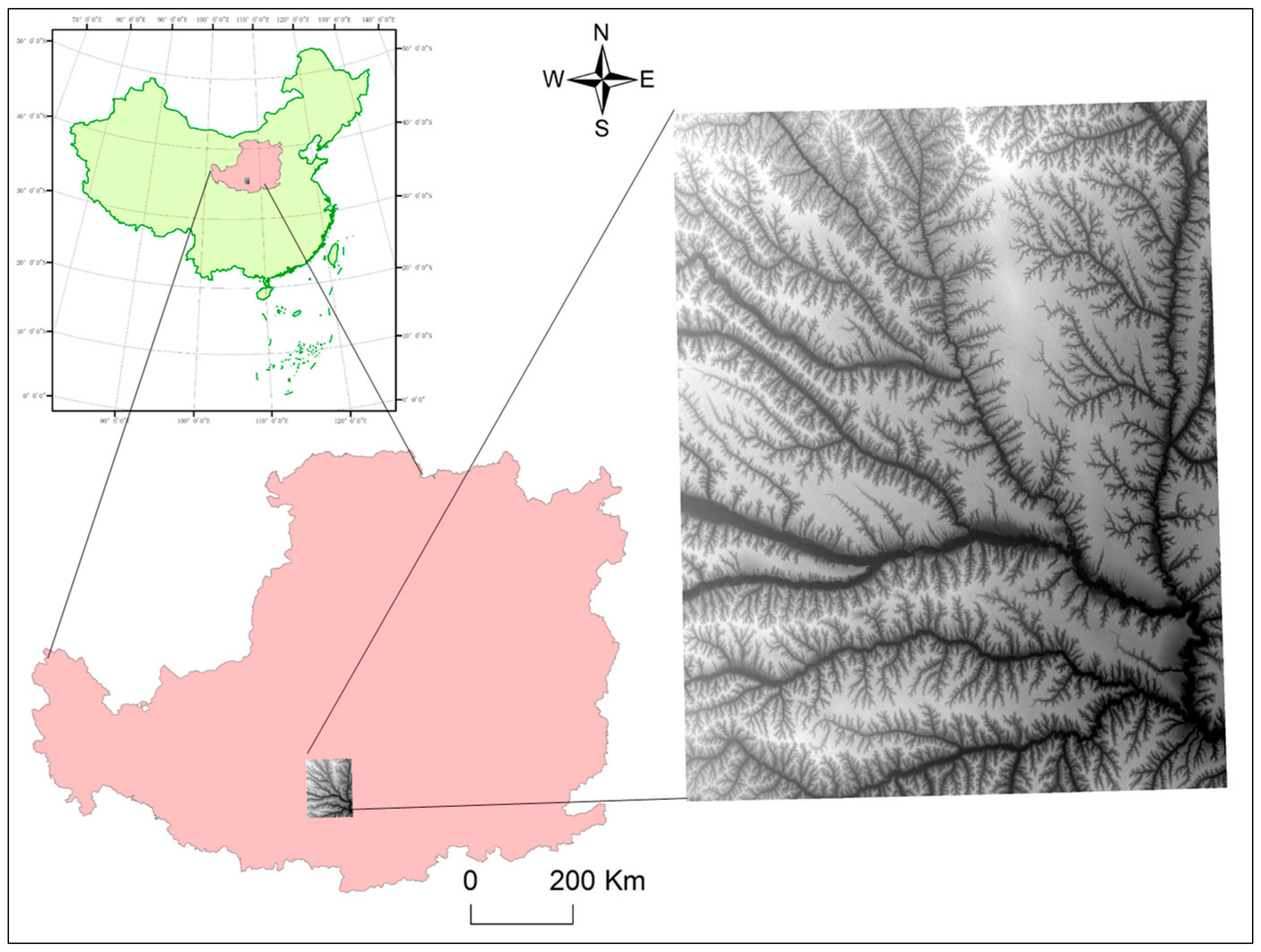
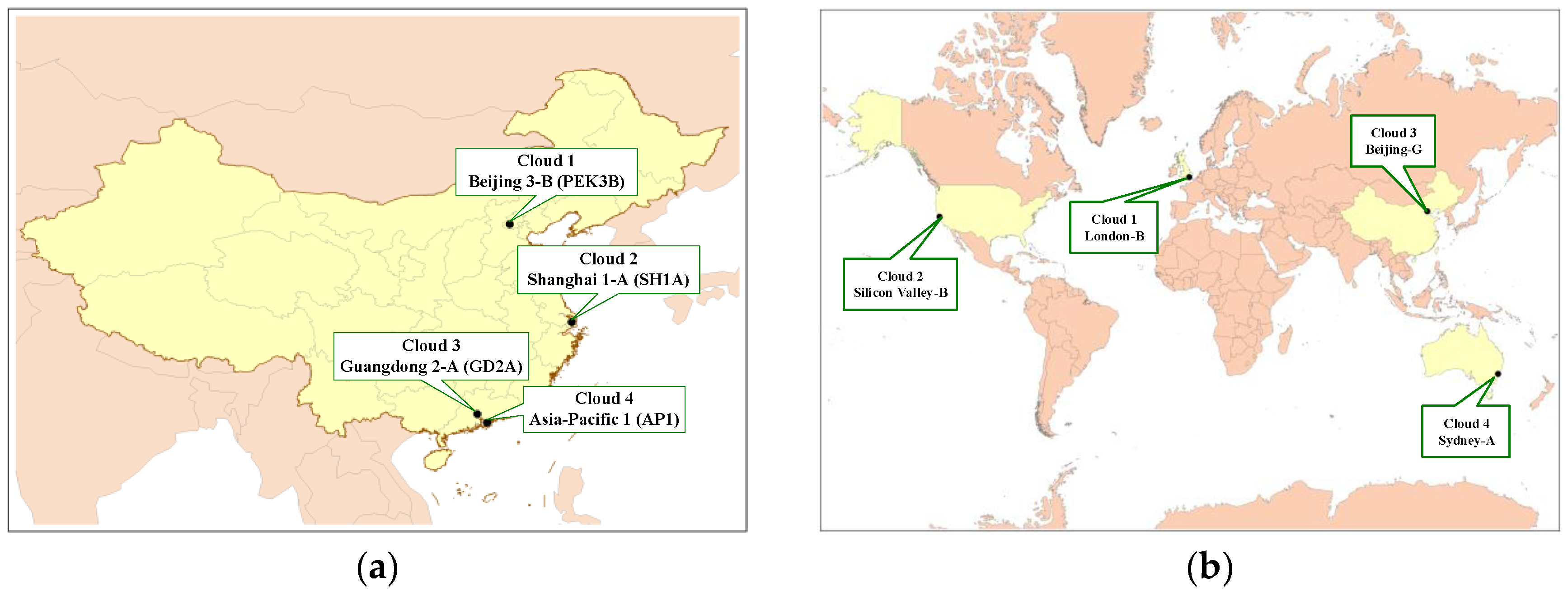


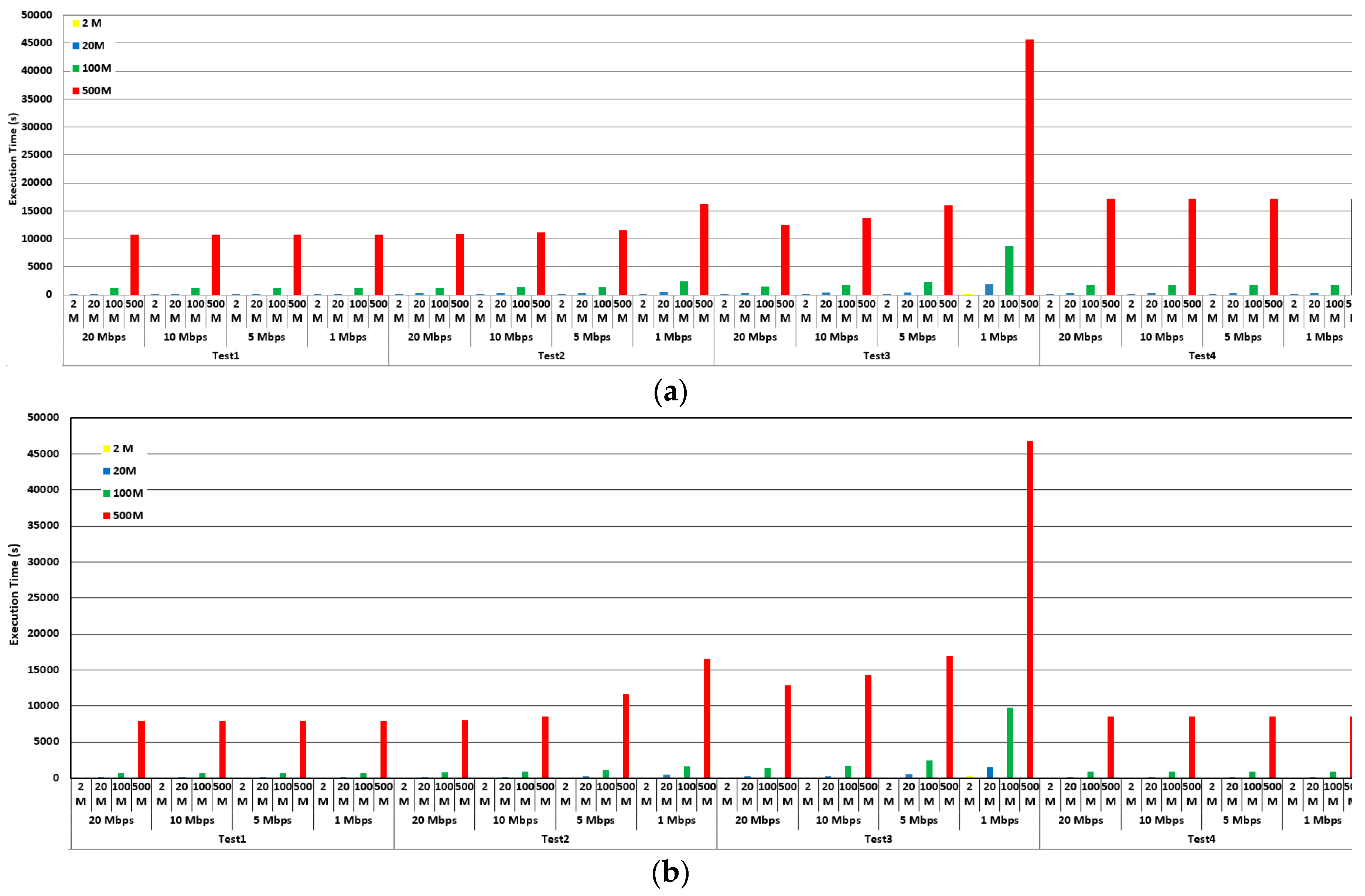
| Geoscience Service Classification | Services | ||
|---|---|---|---|
| Portrayal | Web Map Service | ||
| Service | Web Terrain Service | ||
| Data | Web Feature Service | ||
| Service | Web Coverage Service | ||
| Web Query Service | |||
| Extraction Service | |||
| Geospatial Process Service | Spatial Analysis | Hydrology Service | |
| Overlay Service | |||
| .... | |||
| Web Processing Service | Conversion Tool | Coordinate Transformation Service | |
| Data Format Transformation Service | |||
| Geocode Service | |||
| Thematic Process Service | Gazetteer Service | ||
| Geoparse Service | |||
| Temporal Process Service | |||
| Metadata Process Service | |||
| Registration Service | Category Service for the Web | ||
| DEM | Columns and Rows | Cell Size | Data Size |
|---|---|---|---|
| DEM 1 | 1156 × 919 | 30 × 30 m | 2 MB |
| DEM 2 | 3600 × 3600 | 30 × 30 m | 20 MB |
| DEM 3 | 8334 × 6548 | 30 × 30 m | 100 MB |
| DEM 4 | 18,118 × 14,235 | 30 × 30 m | 500 MB |
© 2018 by the authors. Licensee MDPI, Basel, Switzerland. This article is an open access article distributed under the terms and conditions of the Creative Commons Attribution (CC BY) license (http://creativecommons.org/licenses/by/4.0/).
Share and Cite
Tan, X.; Di, L.; Zhong, Y.; Chen, N.; Huang, F.; Wang, J.; Sun, Z.; Khan, Y.A. Distributed Geoscience Algorithm Integration Based on OWS Specifications: A Case Study of the Extraction of a River Network. ISPRS Int. J. Geo-Inf. 2019, 8, 12. https://doi.org/10.3390/ijgi8010012
Tan X, Di L, Zhong Y, Chen N, Huang F, Wang J, Sun Z, Khan YA. Distributed Geoscience Algorithm Integration Based on OWS Specifications: A Case Study of the Extraction of a River Network. ISPRS International Journal of Geo-Information. 2019; 8(1):12. https://doi.org/10.3390/ijgi8010012
Chicago/Turabian StyleTan, Xicheng, Liping Di, Yanfei Zhong, Nengcheng Chen, Fang Huang, Jinchuan Wang, Ziheng Sun, and Yahya Ali Khan. 2019. "Distributed Geoscience Algorithm Integration Based on OWS Specifications: A Case Study of the Extraction of a River Network" ISPRS International Journal of Geo-Information 8, no. 1: 12. https://doi.org/10.3390/ijgi8010012
APA StyleTan, X., Di, L., Zhong, Y., Chen, N., Huang, F., Wang, J., Sun, Z., & Khan, Y. A. (2019). Distributed Geoscience Algorithm Integration Based on OWS Specifications: A Case Study of the Extraction of a River Network. ISPRS International Journal of Geo-Information, 8(1), 12. https://doi.org/10.3390/ijgi8010012






